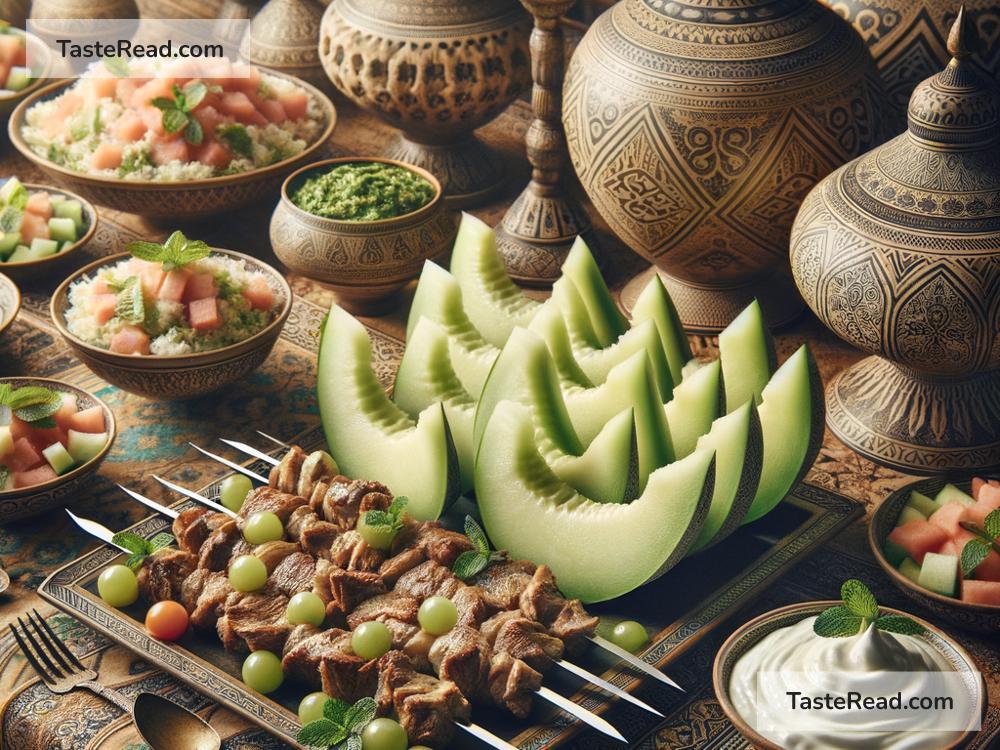The Fascinating History of Honeydew in Middle Eastern Cuisines
Honeydew, the sweet and juicy melon many of us enjoy today, has a fascinating history that links it to the rich culinary traditions of the Middle East. Often seen as a refreshing snack or dessert, honeydew melons have deep historical and cultural roots in the region, where they have been grown and enjoyed for centuries. Let’s explore how this delightful fruit became a staple in Middle Eastern cuisines and why it remains so important in the region.
The Origins of Honeydew Melon
Honeydew melons are believed to have originated in the warm climates of Africa and Southwest Asia thousands of years ago. Historians and botanists trace the cultivation of melons back to ancient Egypt and Mesopotamia, where they were highly regarded not just for their sweet taste but also for their thirst-quenching properties. These early melons were likely smaller and less sweet than the honeydew melons we know today, but they laid the foundation for the fruit’s domestication and spread to other regions.
Over time, melons traveled across trade routes into Persia (modern-day Iran), where they were refined and cultivated into the varieties we enjoy now. The Middle East is a hotspot for melon agriculture, and during the ancient Persian and Ottoman empires, melons—including honeydew—became a beloved food for royals and common people alike. The regions’ warm climate, fertile soil, and advanced farming techniques contributed to the development of sweeter, juicier melons.
Honeydew and Ancient Middle Eastern Cuisines
In ancient Middle Eastern cuisines, honeydew was not just a food but also a symbol of abundance and hospitality. The fruit was often served to guests as a gesture of welcome, demonstrating the host’s generosity. Honeydew’s refreshing qualities also made it popular during hot summer months. People would slice pieces of honeydew and enjoy them as a cooling treat.
Honeydew featured prominently at feasts and celebrations, especially in noble households. Combined with other local ingredients like dates, almonds, and fresh herbs, these melons were transformed into salads and fruit platters that delighted the senses. Honeydew was also a popular way to end a meal, as its sweetness cleansed the palate and provided a satisfying conclusion to dinner.
The Role of Honeydew in Islamic Culture
In many parts of the Middle East, food is closely tied to Islamic culture and religious practices. Honeydew melons were considered healthy and nourishing, aligning with Islamic teachings that emphasize balance and wholesome eating. Prophet Muhammad is said to have recommended melons during his lifetime, praising their cooling effects and health benefits.
Honeydew also played a role during Ramadan, the holy month of fasting for Muslims. After long days of fasting, honeydew and other fruits were served at iftar—the meal that breaks the fast—as a refreshing and nutritious way to rehydrate the body. Even today, honeydew remains a favorite ingredient at iftar tables, paired with other Middle Eastern fruits like figs, dates, and pomegranates.
A Melon of Trade and Travel
Honeydew’s popularity spread far beyond the Middle East, thanks to trade routes like the Silk Road and the expansion of Islamic culture. Merchants carried seeds and preserved melons with them, introducing the fruit to neighboring regions such as India and North Africa. Eventually, honeydew made its way to Europe, where it was embraced by Mediterranean cultures.
During the golden age of Arab science and agriculture, scholars wrote extensively about cultivation techniques for melons, including honeydew. These writings influenced farming practices in Europe and contributed to the development of modern melon varieties. The fruit’s global journey also speaks to the interconnectedness of cultures, with Middle Eastern influences shaping cuisines far and wide.
Honeydew Today in Middle Eastern Cuisine
Even today, honeydew is a beloved fruit in Middle Eastern kitchens. It can be found at markets across the region, especially during the summer when its sweetness is at its peak. Honeydew is often served chilled or mixed with other fruits like watermelon, cantaloupe, and grapes to create colorful fruit salads.
In some Middle Eastern countries, honeydew is blended into juices, smoothies, or chilled soups for a refreshing drink. Chefs also incorporate it into desserts, like sorbets or tarts, often flavored with rosewater or orange blossom. The fruit pairs beautifully with savory dishes too—adding a slice of honeydew to grilled meats or salads provides a delightful contrast between sweet and salty.
The Cultural Significance of Honeydew
Honeydew continues to hold cultural significance in Middle Eastern cooking. It represents simple pleasures, hospitality, and the bounty of nature. Whether shared at a festive gathering, enjoyed after a long day of fasting, or savored in the heat of summer, honeydew remains a cherished part of life in the Middle East.
Conclusion
The history of honeydew in Middle Eastern cuisines is more than just a story of food—it’s a tale of culture, tradition, and connection. From its origins in ancient Mesopotamia to its role in modern kitchens, honeydew has brought joy and nourishment to generations of people. Its sweet taste reminds us of the timeless beauty of Middle Eastern culinary traditions and their ability to bring communities together.
So the next time you bite into a juicy slice of honeydew, take a moment to appreciate its long journey and the incredible history behind it. It’s more than a fruit—it’s a piece of living history.


